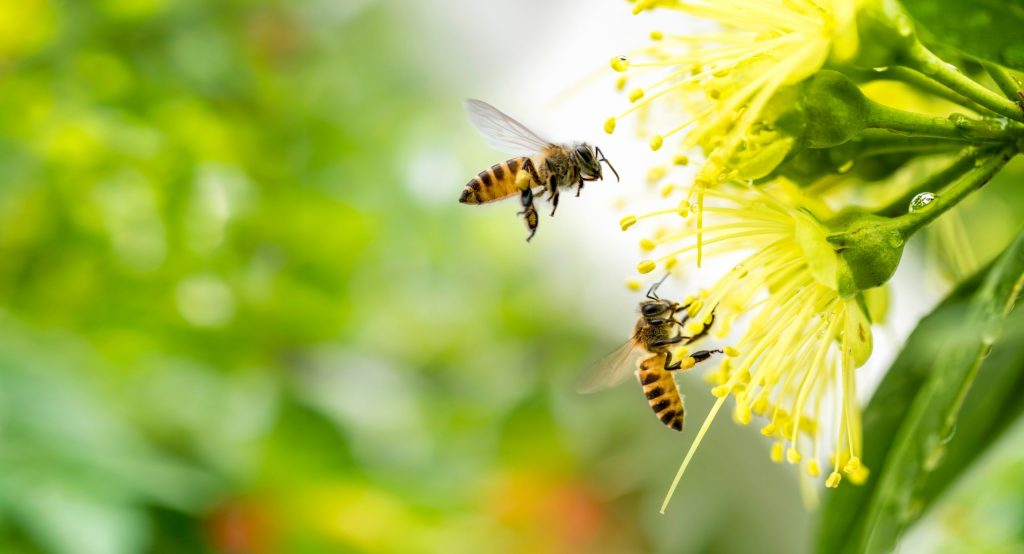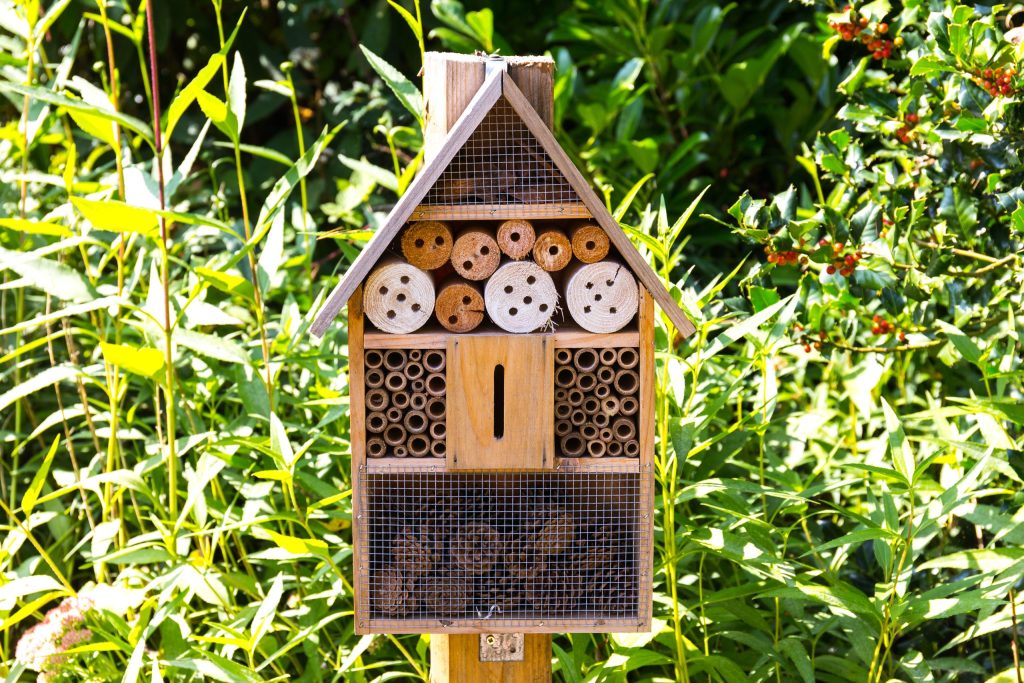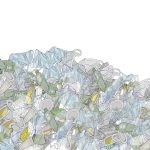Could this Bee the Last Hoorah?
By Alex Spiegel, Environmental Leader
The process of pollination is when pollinators help plants come to fruit by moving pollen from one flower to another. Many plant species rely on pollinators to reproduce. There are around 200,000 different species of animals that can act as pollinators across the globe. Though, honey bees are one of the most numerous and efficient pollinator species in the world. The average honey bee can visit more than 2,000 flowers in only a day; these bees can greatly increase the chances of a plant producing a fruit or vegetable (Planet Bee). In fact, bees pollinate 71 out of the 100 crops that make up 90% of the world’s food supply. “Honeybees and other pollinators are responsible for one out of every three bites of food we eat.” (PPA Fact Sheet). Honey bees don’t only pollinate crops– they also pollinate wild and native plants, thus contributing to all the environmental and societal benefits attributed to pollinators in general (Planet Bee). Bees also act as an ecosystem service. An ecosystem service is defined as “any positive benefit that wildlife or ecosystems provide to people”. Specifically, bees act as a regulating service; a regulating service is a benefit provided by ecosystem processes that moderate natural phenomena. Pollination is a direct example of this due to its role in creating a sustainable food source (NWF). Bees add $15 billion in value to the U.S. agricultural sector by pollinating fruits, nuts and vegetables, according to the White House (Time). Recently, bee populations have been declining at alarming rates.

Bees pollinating a flower. Source: Shutterstock.
What’s happening to bees:
In 2015, apiarists in Maryland lost almost 61 percent of their bees, and that number was expected to grow in future years. Steve McDaniel, one of a dozen master beekeepers in Maryland, lost 19 of 20 colonies in 2015. The losses Maryland has attained has been described as unsustainable (WashPost). Scientists know that bees are dying from a variety of factors—pesticides, drought, habitat destruction, nutrition deficit, air pollution, global warming and more (Green Peace). I had the opportunity to interview Pam Hepp, Vice President of the Montgomery County Beekeepers Association, who gave insight on these threats. According to Ms. Hepp, “The availability of pollen and nectar, the bees only food, is on the decline,” and that “Poor quality, or not enough pollen and nectar means the bees body cannot function as it should.” According to Ms. Hepp, the limited resources make it impossible to “Raise broods and fight off disease at the same time.” Another factor is pests. Ms. Hepp states that, “The varroa mite is the number one pest of the honey bee. The mite vectors viruses as it feeds on the fat bodies of the adult and developing bee.” These tiny creatures can take down whole bee colonies. Pesticides are a huge reason that honey bee populations are declining. There are two groups of chemicals that have been especially harmful to bee populations: neonicotinoids and organophosphates. Neonicotinoid pesticides are defined as pesticides with active ingredients including: Imidacloprid, Nithiazine, Acetamiprid, Clothianidin, Dinotefuran, Thiacloprid, and Thiamethoxam (PPA Fact Sheet). Neonics can impair bee’s ability to relocate their hive, collect food, reproduce, and rear healthy queens (Wash Post). Although they can harm mammals, birds, and other organisms, they are much more toxic to invertebrates, like insects (City Bugs). Studies show that neonicotinoid residues accumulate in pollen and nectar of treated plants. Neonicotinoids are also extremely persistent in the environment (Beyond Pesticides). Organophosphate insecticides are used in agriculture, homes, gardens, and on animals. Ms. Hepp said that “In particular, [they] are highly toxic to bees and insects. Once inside the insect’s body, organophosphates damage acetylcholinesterase- an enzyme needed to control nerve signals.”
Loss of habitat has been another huge factor to the declining bee population trends. Changing temperature and weather conditions due to climate change has restricted the area where bees can survive, and the pollinators have struggled to adapt, according to new research published in the journal Science (Time). The U.S. Government Accountability Office has recommended that in order “to better ensure that Environmental Protection Agency (EPA) is reducing the risk of unreasonable harm to important pollinators, the Administrator of EPA should direct the Office of Pesticide Programs to develop a plan for obtaining data from pesticide registrants on the effects of pesticides on non honey bee species, including other managed or wild, native bees.” As of December, 2020 this recommendation has still failed to be implemented by the EPA (GAO).
What’s being done to counteract the trend:
Researchers have suggested a number of steps that could temporarily help mitigate the threat to the bees. One strategy is assisted migration—a practice where authorities pick up bees and move them—and the creation of “safe havens” (Time). Safe havens can be created in a plot of land as small as a backyard, or over many acres like the federal government plans to do. The federal government developed a plan that called for restoring 7 million acres of bee habitat during the next five years; this project was started in 2015. Agencies that wouldn’t normally be thought of, such as Housing and Urban Development and the Department of Transportation, will have to include bee-friendly landscaping on their properties and in grant-making as a part of the plan. Scientists have worried that large land tracts that grow only one crop have hurt bee nutrition, so numerous federal agencies are aiming to find ways to grow plants on federal lands that are more varied and better for bees to eat. They are spending more money on pollinator research, and are considering using less pesticides nationwide (CBS). Maryland became the first state in the country to restrict bee killing pesticides. The Pollinator Protection Act of 2016 was put in place on January 1, 2018, and it limits the sale and use of neonicotinoid pesticides within the state of Maryland. The goal of the bill is to heavily decrease the number of pollinator deaths due to toxic neonicotinoids. In Montgomery County, Maryland apiarists have been using the best practices to raise healthy bees. Montgomery County beekeepers “Monitor and treat for mites in their colonies – bees tend to visit other hives and rob out the honey of weaker hives – during these robbing runs, the bees also unknowingly pick up and bring mites to their colony. Beekeepers regularly take samples of bees from their hives and count the mites. Based on the number of mites found in a sample, a colony/apiary is treated to kill the mites,” according to Ms. Hepp. The Environmental Protection Agency (EPA) has taken steps to protect honey bees and other bees from risks posed by pesticides as well. They have revised the label requirements for certain pesticides, encouraged beekeepers and others to report bee deaths potentially associated with pesticides, and urged state and tribal governments to voluntarily develop plans to work with farmers and beekeepers to protect bees (GAO). In December 2020, USDA officials said they would lead an effort with other key federal agencies to develop a federal native bee monitoring plan and begin to hold meetings by spring 2021 (GAO). USDA also conducts and funds research and outreach on the health of different categories of bee species, including honey bees and, to a lesser extent, other managed bees and wild, native bees (GAO).

Pollinator garden. Source: Alex Spiegel
How can you help?
There are many ways to reduce the threats towards honeybees. An easy way to help save the bees is through habitat protection. For those with a garden there are a few steps that can be taken, which are extremely beneficial to habitat protection. They include choosing plants that are naturally adapted to your garden’s soil conditions, light, moisture, and drainage; planting a wide variety of trees, shrubs, and flowering plants with different heights and growth habits; planting a pollinator garden where it can get at least six hours of sunlight a day; providing a water source; eliminating or limiting the use of pesticides; and letting your lawn go more natural (MD Grows). Ms. Hepp exclaimed that “People need to use pesticides, weed killers (herbicides) fungicides only when they are truly needed and by following the directions on the label.” While different pollinators may have specific needs to support each stage of their lifecycle, they all need high-quality habitat that provides an abundance of flowers, shelter and nesting sites, and protection from pesticides. Ground nesting bees need access to bare earth. Thick layers of mulch, expanses of lawn, and paved surfaces common to many suburban landscapes reduce the availability of nesting habitat for these bees. Mulching with compost instead of wood bark mulch allows for nesting and improves your soil. Tilling can kill ground nesting bees. Reducing, eliminating, or changing the timing and equipment used for tilling can all have a beneficial impact on ground nesting pollinators. Implementing non-flowering buffers may be useful in preventing pesticides from leaching into areas where bees may be nesting (Xerces). Lastly, supporting local beekeepers is a great way to protect bees because they know the best ways to help their colonies. Ms. Hepp explained that if you “Go to the MCBA Website and search by your zip code,” you will be able to find local beekeepers to purchase from.

Bee hotel. Source: Shutterstock
Overall, it is necessary that bees are protected. It is very promising to see many different organizations aiming to stop the decline of bee populations, but there is still much more work to do before the current situation is changed. If you are able to help, please do, and let’s aim to bee their saviors!
References
Bees are losing their habitat because of climate change. (n.d.). Time. Retrieved October 12, 2021, from https://time.com/3951339/bees-climate-change/
Chemicals implicated. (n.d.). Beyond Pesticides. Retrieved October 12, 2021, from https://www.beyondpesticides.org/programs/bee-protective-pollinators-and-pesticides/chemicals-implicated
Ecosystem services. (n.d.). National Wildlife Federation. Retrieved October 12, 2021, from https://www.nwf.org/Home/Educational-Resources/Wildlife-Guide/Understanding-Conservation/Ecosystem-Services
Government’s “all hands on deck” plan to save the bees. (n.d.). Retrieved October 12, 2021, from https://www.cbsnews.com/news/governments-grand-plan-to-save-the-bees/
Hepp, Pam. “Honey Bees.” 18 Oct. 2021
Information Sheet Pollinator Protection Act 2016. (n.d.). Maryland Department of Agriculture. https://mda.maryland.gov/plants-pests/Documents/PollinatorProtectionActFactSheet.pdf
Maryland Grows. (2018, April 25). Plant for pollinators: 9 ways to attract and help pollinators in your garden and yard. Maryland Grows. https://marylandgrows.umd.edu/2018/04/25/plant-for-pollinators-9-ways-to-attract-and-help-pollinators-in-your-garden-and-yard/
Nesting resources | xerces society. (n.d.). Retrieved October 12, 2021, from https://xerces.org/pollinator-conservation/nesting-resources
Office, U. S. G. A. (n.d.). Bee health: Usda and epa should take additional actions to address threats to bee populations. Retrieved October 12, 2021, from https://www.gao.gov/products/gao-16-220
Raindrop, B. (2016, March 18). Protecting bees in Maryland. Washington Post. https://www.washingtonpost.com/opinions/protecting-bees-in-maryland/2016/03/18/271d44a0-e7cb-11e5-a6f3-21ccdbc5f74e_story.html
Save the bees. (n.d.). Greenpeace USA. Retrieved October 12, 2021, from https://www.greenpeace.org/usa/sustainable-agriculture/save-the-bees/
We need bees. (n.d.). Planet Bee Foundation. Retrieved October 12, 2021, from https://www.planetbee.org/why-we-need-beeWhat is a neonicotinoid? (n.d.). Insects in the City. Retrieved October 12, 2021, from https://citybugs.tamu.edu/factsheets/ipm/what-is-a-neonicotinoid/
About the Author:
 Alex Spiegel, 2021-2022 Environmental Leader
Alex Spiegel, 2021-2022 Environmental Leader
Alex is a Senior at Bethesda-Chevy Chase High School. He has always been passionate about the environment, which is why he joined the Environmental Leaders Program at Bethesda Green! He’s extremely excited to be able to help create a better future for the environment as part of the Bethesda Green Environmental Leaders program. His passions other than the environment include soccer, music, and cooking.





